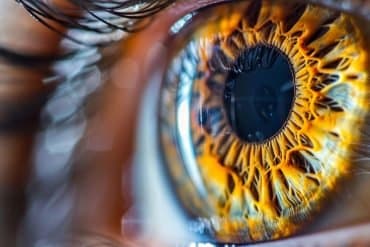Summary: Recent studies reveal effects of cannabis and alcohol co-use on adolescent rats, simulating human behavior.
Rats voluntarily consumed THC-infused treats and alcohol, allowing researchers to observe changes in brain structure and behavior. Notably, co-use led to reduced synaptic plasticity in the prefrontal cortex, with effects more pronounced in female rats.
The studies aim to understand cognitive disruptions caused by drug use in adolescence and develop treatment approaches.
Key Facts:
- The study uniquely allowed rats to choose to consume both THC and alcohol, reflecting human drug-use patterns.
- Co-use of cannabis and alcohol in adolescent rats led to noticeable changes in brain signaling and synaptic plasticity, especially in the prefrontal cortex.
- The research highlights the potential long-term cognitive impacts of adolescent drug use, with an emphasis on developing future treatments for addiction-related cognitive dysfunctions.
Source: University of Illinois
The increased legalization of cannabis over the past several years can potentially increase its co-use with alcohol. Concerningly, very few studies have looked at the effects of these two drugs when used in combination.
In a series of new studies, researchers at the University of Illinois Urbana-Champaign used rats to understand how brain structure and behavior can change when cannabis and alcohol are taken together.
Most researchers have studied the effects of either alcohol or THC (delta-9-tetrahydrocannabinol), the primary psychoactive drug in cannabis, alone. However, when people, especially adolescents, use these drugs, they often do so in tandem.

Even when researchers study the co-use of these drugs, it involves injecting the animals with the drugs, which does not mirror what happens in humans.
“It’s rare that a person would have these drugs forced upon them. Also, other studies have shown that the effects of a drug are very different when an animal chooses to take it compared to when it is exposed against its will,” Lauren Carrica, a graduate student in the Gulley lab.
“Our study is unique because the rats have access to both these drugs and they choose to consume them.”
The researchers used young male and female rats to mimic adolescence in humans. During feeding time, the animals were exposed to recreational doses (3 mg/kg-10 mg/kg) of THC that was coated on Fudge Brownie Goldfish Grahams and a sweetened 10% ethanol solution. The control group of rats were fed just the cookies and sweetened water in addition to their regular food.
“Training them to eat the drug was simple. We mimicked the timing that humans are more likely to take the drugs—at the end of the day. We did not deprive them of food or water. They were given an alcohol bottle in place of their water bottle during the access period and they preferred eating the cookies over their regular chow,” said Nu-Chu Liang, an associate professor of psychology.
After 20 days of increasing THC doses, rats were drug-free as they grew into young adulthood. The researchers took blood samples from the rats and also tested their memories to see if the co-use of drugs had any effect.
Briefly, rats were required to remember the location of a target lever after a delay period that ranged from very short to very long. If they remembered the location, and pressed the target lever, they earned a food reward. If they responded on the wrong lever, no food was delivered.
“The effects were more pronounced in females and they had higher levels of chemicals that are produced when THC is broken down. Even so, the influence of THC on memory were modest,” Carrica said.
“These volitional, low-to-moderate doses of alcohol, THC, or both drugs did not induce long lasting, serious cognitive defects.”
“The subtlety of these effects is not surprising because we have modeled how these drugs are taken in a social setting over a relatively short period of time,” said Joshua Gulley (GNDP), a professor of psychology.
“Our results with the female rats are in agreement with other research that has shown that women who take edibles often have a different experience, which may be due to differences in how their bodies break down the drug.”
In this first study the researchers were unable to expose the rats to higher levels of THC because the rats would ignore the THC-laced cookies.
“When you gave them higher doses, some animals lost interest in the cookies, and it is unclear why. It’s possible that they don’t like the higher doses or there is something about the taste or smell that becomes aversive,” Gulley said.
Although there were modest differences in behavior, the group still wanted to check whether anything had changed in the signaling pathways in the brain, especially at higher levels of THC. In the second paper they did so by injecting alcohol-drinking or non-drinking adolescent rats with THC doses ranging from 3 mg/kg to 20 mg/kg.
Similar to the first study, the injections and alcohol drinking were then stopped and the rats were tested once they reached early adulthood.
Just like humans, rat brains undergo significant changes during adolescence, particularly in the prefrontal cortex, which helps them adapt to changing environments. The neurons in the prefrontal cortex modify their connections—a process referred to as synaptic plasticity—from the end of adolescence into young adulthood, according to Gulley.
The researchers wanted to test whether drug exposure during adolescence could change the ability of the brain to undergo synaptic plasticity as an adult. Therefore, they sacrificed the rats and measured the electrical signals generated in the brain.
“We found that alcohol and THC together significantly reduced, and in some cases prevented, the ability of the prefrontal cortex in drug-exposed rats to undergo plasticity in the same way that the brains from control animals can,” said Linyuan Shi, a graduate student in the Gulley lab.
“The effects were apparent in rats exposed to either drug alone, and they were most pronounced with co-exposure to both drugs. We also found the impaired plasticity was likely due to changes in signaling caused by gamma-aminobutyric acid, a chemical messenger in the brain.
“When we used a chemical that enhances GABA, it could rescue the deficits we saw in the animals that had been exposed to the drugs.”
The researchers are now interested in understanding which neurons are involved in the response to the drugs.
“From these studies, and the work our group has done with methamphetamine, we know that drug exposure during adolescence has the ability to disrupt cognitive functioning by altering the development of neuronal signaling in the prefrontal cortex.
“Although different drugs influence the brain in different ways, they might have the same effect on the brain that can manifest as cognitive disruptions later in life,” Gulley said.
“Our ultimate goal is to harness our knowledge of these changes to develop treatment approaches for reversing cognitive dysfunctions that are associated with long-term drug use and addiction.”
About this substance use and neurodevelopment research news
Author: Nicholas Vasi
Source: University of Illinois
Contact: Nicholas Vasi – University of Illinois
Image: The image is credited to Neuroscience News
Original Research: Open access.
“Effects of combined use of alcohol and delta-9-tetrahydrocannibinol on working memory in Long Evans rats” by Joshua Gulley et al. Behavioral Brain Research
Open access.
“Effects of combined exposure to ethanol and delta-9-tetrahydrocannabinol during adolescence on synaptic plasticity in the prefrontal cortex of Long Evans rats” by Joshua Gulley et al. Neuropharmacology
Abstract
Effects of combined use of alcohol and delta-9-tetrahydrocannibinol on working memory in Long Evans rats
The increase in social acceptance and legalization of cannabis over the last several years is likely to increase the prevalence of its co-use with alcohol. In spite of this, the potential for effects unique to co-use of these drugs, especially in moderate doses, has been studied relatively infrequently.
We addressed this in the current study using a laboratory rat model of voluntary drug intake. Periadolescent male and female Long-Evans rats were allowed to orally self-administer ethanol, Δ9-tetrahydrocannibinol (THC), both drugs, or their vehicle controls from postnatal day (P) 30 to P47. They were subsequently trained and tested on an instrumental behavior task that assesses attention, working memory and behavioral flexibility.
Similar to previous work, consumption of THC reduced both ethanol and saccharin intake in both sexes.
Blood samples taken 14 h following the final self-administration session revealed that females had higher levels of the THC metabolite THC-COOH. There were modest effects of THC on our delayed matching to position (DMTP) task, with females exhibiting reduced performance compared to their control group or male, drug using counterparts.
However, there were no significant effects of co-use of ethanol or THC on DMTP performance, and drug effects were also not apparent in the reversal learning phase of the task when non-matching to position was required as the correct response.
These findings are consistent with other published studies in rodent models showing that use of these drugs in low to moderate doses does not significantly impact memory or behavioral flexibility following a protracted abstinence period.
Abstract
Effects of combined exposure to ethanol and delta-9-tetrahydrocannabinol during adolescence on synaptic plasticity in the prefrontal cortex of Long Evans rats
Significant exposure to alcohol or cannabis during adolescence can induce lasting disruptions of neuronal signaling in brain regions that are later to mature, such as the medial prefrontal cortex (mPFC). Considerably less is known about the effects of alcohol and cannabis co-use, despite its common occurrence.
Here, we used male and female Long-Evans rats to investigate the effects of early-life exposure to ethanol, delta-9-tetrahydrocannabinol (THC), or their combination on high frequency stimulation (HFS)-induced plasticity in the prelimbic region of the mPFC.
Animals were injected daily from postnatal days 30–45 with vehicle or THC (escalating doses, 3–20 mg/kg) and allowed to drink vehicle (0.1% saccharin) or 10% ethanol immediately after each injection. In vitro brain slice electrophysiology was then used to record population responses of layer V neurons following HFS in layer II/III after 3–4 weeks of abstinence.
We found that THC exposure reduced body weight gains observed in ad libitum fed rats, and reduced intake of saccharin and ethanol. Compared to controls, there was a significant reduction in HFS-induced long-term depression (LTD) in rats exposed to either drug alone, and an absence of LTD in rats exposed to the drug combination.
Bath application of indiplon or AR-A014418, which enhance GABAA receptor function or inhibit glycogen synthase kinase 3β (GSK3β), respectively, suggested the effects of ethanol, THC or their combination were due in part to lasting adaptations in GABA and GSK3β signaling.
These results suggest the potential for long-lasting adaptations in mPFC output following co-exposure to alcohol and THC.






